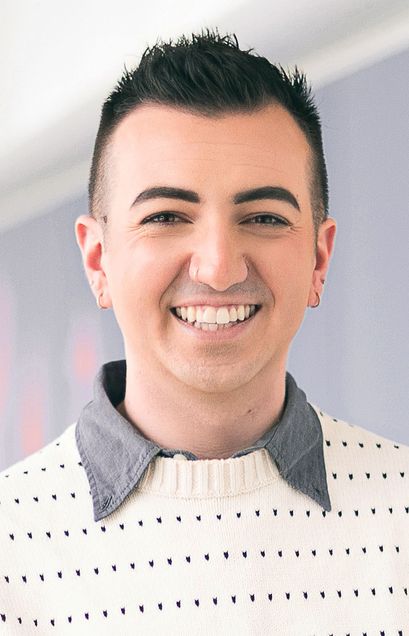
When Jesse Moreira started teaching their first cardiovascular physiology class to a large group of premedical students at Boston University, the clinical assistant professor soon noticed a pattern.
“I’m very vocal and open with my identities in the classroom,” says Moreira (’18,’21), who is nonbinary. Queer students started coming to Moreira during office hours, sharing sentiments like, “Thank you for being authentic. It helped me feel more comfortable in the classroom space,” Moreira says.
This got Moreira thinking—how might future clinicians, researchers, and medical professionals be better trained to serve LGBTQ+ patients? With research expertise in cardiovascular systems and disease, Moreira educates students on the burden of heart disease on historically marginalized communities and the full spectrum of the cardiovascular system. By increasing representation in the classroom, and enhancing students’ understanding of how chronic stress from marginalization impacts heart health, Moreira works to improve patient care.
According to a growing body of research, gay men and bisexual women face higher rates of hypertension, Moreira says, and transgender Americans are at higher risk for cardiovascular disease. But LGBTQ+ populations are also largely left out of STEMM (science, technology, engineering, mathematics, and medicine) research and education. Moreira coauthored a paper in the American Journal of Physiology on the lack of inclusion of lesbian, gay, bisexual, transgender, queer or questioning, intersex, asexual, Two Spirit, nonbinary, and gender nonconforming people in STEMM, and action steps to retain scientists in physiology. The authors point out that LGBTQ+ scientists and others in STEMM fields experience more harassment during their careers and have higher dropout rates than their cisgender-heterosexual peers, likely due to lacking a sense of belonging in the field.
To address these problems, Moreira uses the classroom as a first step. Last fall, while teaching a cardiovascular pathophysiology class of about 100, Moreira conducted a study that measured how a lecture focused on disparities in marginalized communities impacted students.
“When we train more inclusive-minded scientists and clinicians, we reduce implicit bias that they hold, and possibly that will translate as better outcomes for their patients one day or better-designed clinical trials.”
—Jesse Moreira
In the lecture, Moreira went over the minority stress theory—which describes how LGBTQ+ people systematically experience psychological distress—as well as basic cardiovascular science to demonstrate how stress pathways are activated from the brain to the heart. The class then worked through case studies that helped them see example patients who might have intersecting marginalized identities.
Moreira concluded the lesson with a question: What’s something you can do that costs little to nothing to make a difference? Students shared ideas like community-organized spaces, where LGBTQ+ people can get their blood pressure taken, and other safe places for queer clinicians to provide peer-to-peer education. “When we train more inclusive-minded scientists and clinicians, we reduce implicit bias that they hold, and possibly that will translate as better outcomes for their patients one day or better-designed clinical trials,” Moreira says.
Moreira surveyed half the students to measure how the lecture impacted them and found significant improvement in both subjective and objective understanding related to health inequities in cardiovascular health for LGBTQ+ populations and BIPOC (Black, Indigenous, and people of color) communities. Students were able to remember and understand the information, providing a strong foundation for learning more as they continue through school.
Moreira plans to repeat the study in fall 2023 to see if the course remains effective. Eventually, they want to reach medical students through targeted lectures, class discussions, and reflection activities that involve designing new public health interventions.
On the final exam for the course, Moreira asked students about their biggest takeaway from the class. After 24 lectures covering topics from hypertension to heart failure—and just one focused on marginalized communities—almost every person wrote about marginalized communities and their unique needs. “It shows that the students were impacted by this,” Moreira says. “One student wrote, ‘Thank you so much for even talking about this. It feels so different to be represented in front of a classroom. I feel seen.’”